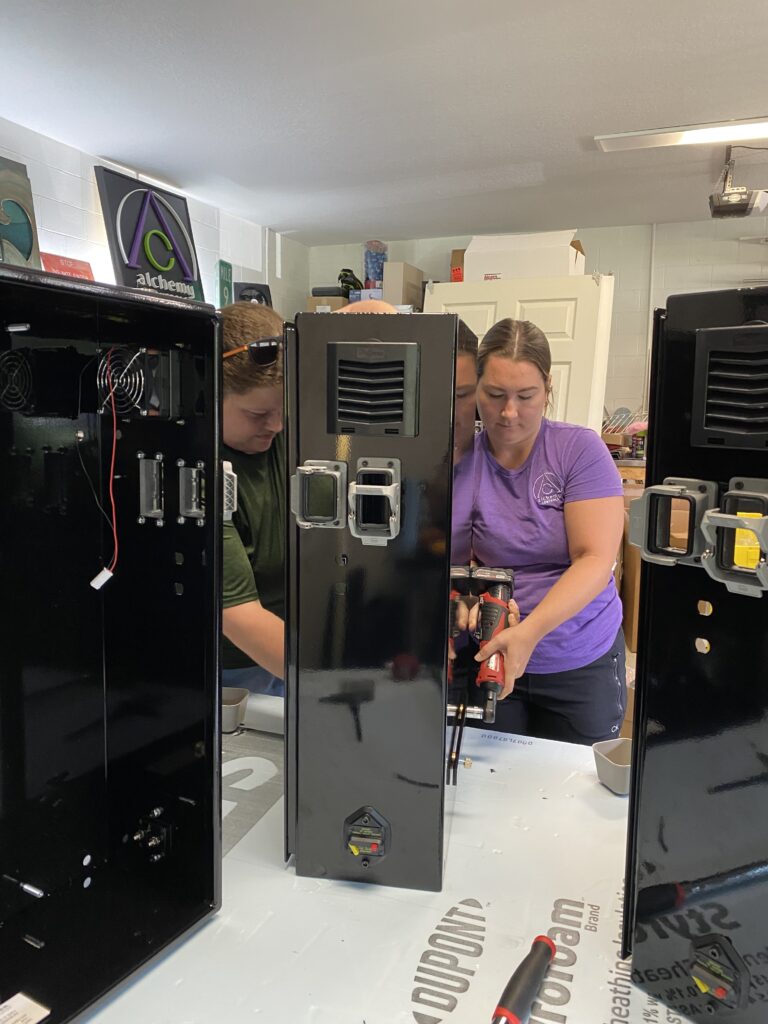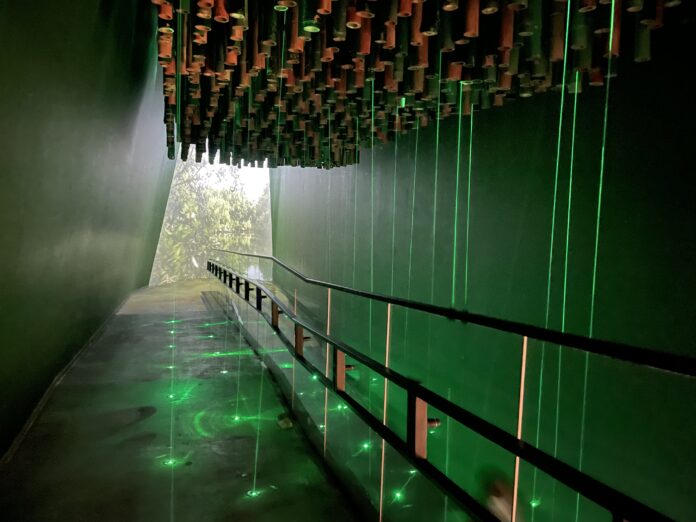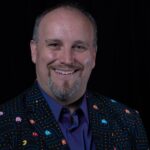Joe Fox from Alchemy Controls shares tips for successful technology-rich projects
by Joe Fox
When people go to see a new attraction, a new experience, what do they look for? What do they look at? Most guests are there to see the show, to be immersed in the story and experience. The behind-the-scenes stuff – the projectors, mixers and other equipment – should stay behind the scenes, where it’s meant to be, or else the illusion will be broken, and the suspension of disbelief lost. That’s when the magic is gone, unless you’re one of the folks (like us) who make the magic using tools and technology. We call ourselves Alchemists, because we transform matter into attraction magic.
The dictionary defines alchemy as “a seemingly magical process of transformation, creation or combination.” Arthur C. Clarke said it another way: “Any sufficiently advanced technology is indistinguishable from magic.” If themed experience is to deliver magical experiences to guests, our technology must be sufficiently advanced and properly implemented. We want to architects and other tech disciplines bring their talents to bear on these early designs and flesh out the right tools and technologies necessary for an attraction to materialize, and then those details give way to finding the right team to deploy those solutions. This includes audio, video, lighting, projection, animatronics, show control and much more.
Bring creative and tech together early
It begins as early in the process as possible, by thinking through the creative intent, how it might be achieved, and whether the required technology even yet exists. (No project should ever start from the technology, unless the intent is to demonstrate the capability of a technology as part of a sales pitch or marketing gag.) The process starts with story, with concept, with narrative and the journey, but we do ourselves a disservice if we don’t have the voices of technology in the room so that a collaborative dialogue can take place.
For us, that’s our favorite part – inventing things when we don’t let ourselves believe we can’t. From that initial spark and dialogue comes the framework of a solution, the technical corollary of a concept drawing, which guides the technical teams toward a possible architecture for delivering the tech magic that will make the experience possible. Just like architects wringing a brick-and-mortar building out of an early concept sketch, solution architects and other tech disciplines bring their talents to bear on these early designs and flesh out the right tools and technologies necessary for an attraction to materialize, and then those details give way to finding the right team to deploy those solutions. This includes audio, video, lighting, projection, animatronics, show control and much more. Unifying these systems are power and networks and other infrastructure elements. Each must be planned carefully to deliver on the eventual goal of being invisible to the guests and enabling the magic. This also allows us to pick the RIGHT components earlier in the process, helping to hold costs down and maximize the return on investment so that we aren’t re- working, paying to rush order items or having to deploy even more technology to cover for not having planned it from the beginning.
A great example is audio – if you build the speakers into what you’re designing and account for the volumes needed early enough, you can save on needing to hide or scenically treat them later because they’re an integral element. You can also make them much more maintainable as part of the design process, lowering your overall total cost of ownership over the life of the attraction. We recently worked on a wiring harness where we were able to reduce the cost of the wires by a factor of 10 by asking a few leading questions. When you’re producing hundreds of these, that adds up quickly!

Support invisibility
Starting earlier in the process means those elements have a far greater chance of blending in with the woodwork (and other scenic elements) and not becoming obtrusive or costly modifications later on. Choosing an integration firm with knowledge of each area, and their interconnections and the overall architecture of systems can allow your teams latitude to dream bigger and brighter and to deliver on the creative intent of your experiences with ever less-visible technology. Integrators can also be your representative in the conversations with the other vendors on the team for responding to questions about integration approaches (will we use SMPTE? MTC? Network time code?), network designs (will this be a private network or part of a parkwide or corporate network? How should we logically and physically segment the systems? What devices need to communicate with each other?), plan the high-level ICDs (interconnection diagrams) and otherwise give your system the structure it needs for the rest of the team to come and turn into a full-fledged design. Now the magic is shaping up, and the Alchemists’ sorcery is becoming (in)visible.
Many of the guest experiences being designed today are also interactive in nature, meaning the audience will become part of the system and the systems have to be even more invisible. For instance, if designing a spaceship for guests to travel to another galaxy, the interface should support the illusion on every level possible. These systems end up connecting to PLCs, to show controllers, to lighting controllers and more in order to make the experience seamless, and planning for each of those interactions (particularly when space is at a premium) is critical. Custom components may have to be fabricated and may have to interact with one or more systems. How will they connect? How will they be powered? Do they need any specific testing or certifications to be safe for public use?
Test and perfect
The integration team can also be invaluable during mock-ups and testing and can help iterate quickly without having to write additional contract elements for each of these to the multiple disparate vendors (and if needed, they can often manage the subcontracting process to bring in additional resources faster and more elegantly than the operators can because of their size and reduced bureaucracy).
The goal of the design teams working on interactives is that the experience must be effortless if the audience are to remain engaged. To attain this effortlessness for the guest requires effort from the team. It is the product of careful thought and analysis, component selection, iteration and playtesting, leading to something that works exactly as you would expect it to.
Once tests have validated a system is viable, there’s still a LOT of technical work to be done. It includes selecting the components, confirming availability and swapping for alternates (particularly in the wake of the post-COVID supply chain). It includes building the enclosures and racks and certifying them to the appropriate standards (UL, ETL, NEC, NFPA in the US; CE, CEN, ESTI and others in the EU; CCC and GB in China, and many others besides). It includes coordinating the integration between vendors and ensuring all systems are driving toward the same goals and following their respective ICDs, validating the safety and functionality of the entire system and then training the operators and maintenance teams how to care and feed for the system that will be theirs for five, 10, 20 or more years to come. The Alchemy team has considerable expertise in finding things and coming up with solutions over seemingly insurmountable hurdles – including budget and schedule, the two omnipresent challenges on every project ever.
Stay on the edge
Attractions have grown more complex over the years; there is an astounding contrast in looking back at some of the “simple” dark rides at Disneyland and Knott’s of yesteryear compared to the mega-thrillers of today. And this is how it should be. The challenge is to stay ahead, with technologies on the leading and bleeding edges and never lose the spirit of invention. The only way to do that is to work together and to start the involvement of the technical teams as early along in the process as possible, ideally during the blue-sky phases and to build trusted partnerships with people who can be our guides into the technological otherworld. The technologists in the room must bring an open mind and the improvisational sketch artist must turn “Yes, and” into “Yes, if…” That “if ” will be fulfilled by their creativity and imagination, and their depth of knowledge of what is possible and what isn’t – yet. Walt Disney was famous for saying “It’s kind of fun to do the impossible.”
It sure is. • • •
Joe Fox brings his themed entertainment experience and skills as a problem solver, project engineer, integrator, and programmer to his role as Managing Director at Alchemy Controls, which specializes in building UL-listed control panels to order. Visit alchemycontrols.com.







